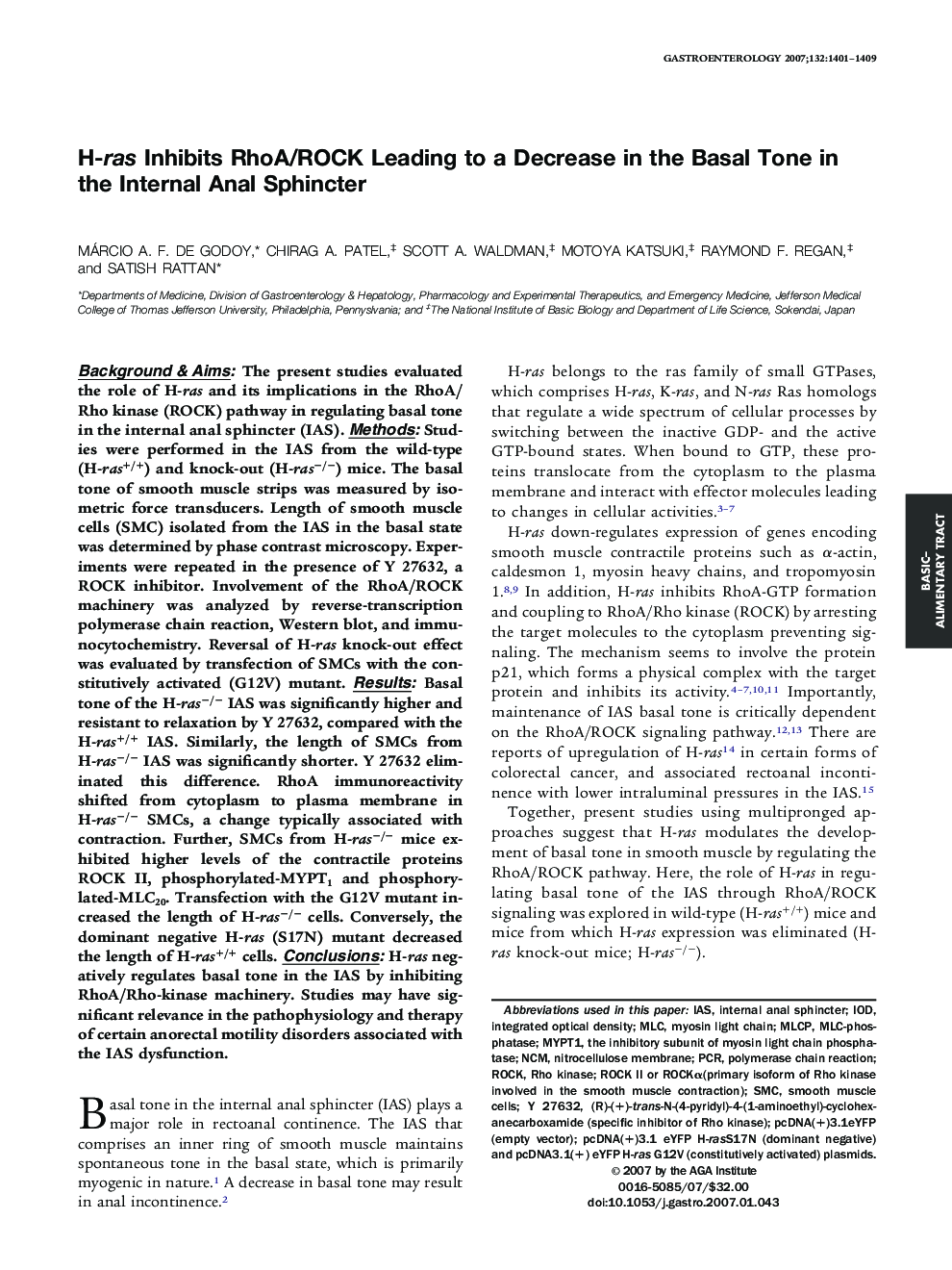| Article ID | Journal | Published Year | Pages | File Type |
|---|---|---|---|---|
| 3298451 | Gastroenterology | 2007 | 9 Pages |
Background & Aims: The present studies evaluated the role of H-ras and its implications in the RhoA/Rho kinase (ROCK) pathway in regulating basal tone in the internal anal sphincter (IAS). Methods: Studies were performed in the IAS from the wild-type (H-ras+/+) and knock-out (H-ras−/−) mice. The basal tone of smooth muscle strips was measured by isometric force transducers. Length of smooth muscle cells (SMC) isolated from the IAS in the basal state was determined by phase contrast microscopy. Experiments were repeated in the presence of Y 27632, a ROCK inhibitor. Involvement of the RhoA/ROCK machinery was analyzed by reverse-transcription polymerase chain reaction, Western blot, and immunocytochemistry. Reversal of H-ras knock-out effect was evaluated by transfection of SMCs with the constitutively activated (G12V) mutant. Results: Basal tone of the H-ras−/− IAS was significantly higher and resistant to relaxation by Y 27632, compared with the H-ras+/+ IAS. Similarly, the length of SMCs from H-ras−/− IAS was significantly shorter. Y 27632 eliminated this difference. RhoA immunoreactivity shifted from cytoplasm to plasma membrane in H-ras−/− SMCs, a change typically associated with contraction. Further, SMCs from H-ras−/− mice exhibited higher levels of the contractile proteins ROCK II, phosphorylated-MYPT1 and phosphorylated-MLC20. Transfection with the G12V mutant increased the length of H-ras−/− cells. Conversely, the dominant negative H-ras (S17N) mutant decreased the length of H-ras+/+ cells. Conclusions: H-ras negatively regulates basal tone in the IAS by inhibiting RhoA/Rho-kinase machinery. Studies may have significant relevance in the pathophysiology and therapy of certain anorectal motility disorders associated with the IAS dysfunction.
